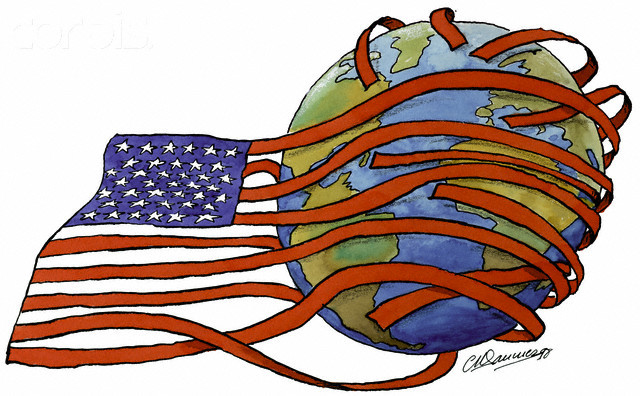This island kingdom was annexed by the United States for its strategic military location and valuable resources like sugar.
Hawaii
This US president proposed the Fourteen Points to create lasting peace and prevent future wars.
Woodrow Wilson
One major change in the workforce during WWI was companies hiring this group in traditionally male jobs.
Women
Tanks were introduced during WWI primarily to overcome this type of defense that caused stalemates.
Trench warfare
Extending a nation's power by acquiring territories

Imperialism
This naval officer’s ideas about sea power influenced the United States to build a stronger navy and expand its influence overseas in the late 19th and early 20th centuries. Who was he?
Alfred T. Mahan
List the main causes of World War I, starting with the spark that ignited the war, followed by four additional causes.
* Assassination of Archduke Franz Ferdinand
Militarism
Alliances
Imperialism
Nationalism
This demographic group migrated to northern cities during WWI seeking better job opportunities.
African Americans
This type of unrestricted warfare by Germany was a key factor pushing the US into WWI.
Unrestricted submarine warfare
This 1917 law required men in the United States to register for military draft during World War I. What is it called?
Selective Service Act also known as the draft
This war marked the United States’ emergence as a world power by gaining overseas territories like Guam and the Philippines.
Spanish-American War
This secret German message to Mexico promised the return of lost territories if Mexico allied with Germany against the United States during World War I. What is this message called?
Zimmermann Telegram
The Espionage Act was used to limit this constitutional right during WWI.
1st Amendment: Freedom of speech / expression
Information, ideas, or rumors deliberately spread to influence people's opinions or promote a particular political cause (such as joining the army) or point of view, often by presenting facts selectively or emotionally.
Propaganda
Building up strong armed forces to prepare for war
Militarism
This US policy aimed to keep European powers out of Latin America while expanding US influence in the Western Hemisphere.
Monroe Doctrine / Roosevelt Corollary
Before entering World War I, the United States followed this foreign policy, avoiding involvement in European conflicts and focusing on its own affairs. What is this policy called? affairs and wars
Isolationism
This US policy aimed to keep China open to trade with all countries equally.
Open Door Policy
This foreign policy approach by Theodore Roosevelt emphasized negotiation backed by military strength.
Big Stick Policy
A style of sensationalized and exaggerated news reporting used to attract readers and influence public opinion, often by using eye-catching headlines and emotional stories rather than factual accuracy.
Yellow Journalism
After the Spanish-American War, the United States acquired these three territories: Puerto Rico, Guam, and this large island in the Pacific. Name the third territory.
Philippines
This was the main reason the US Senate refused to ratify the Treaty of Versailles after WWI.
The Senate opposed US participation in the League of Nations fearing loss of congressional war-declaring powers
What was the primary purpose of gas masks introduced during WWI?
To protect soldiers from poison gas attacks
Describe the strategic importance of the US gaining military bases in the Pacific Ocean during this period.
They allowed the US to project naval power and protect trade routes in the Pacific region
Annexation
Formal acquisition of territory by a country